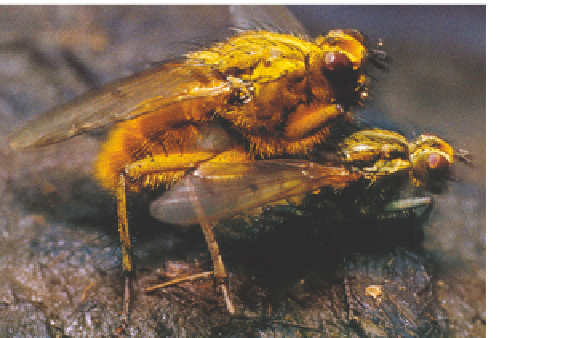Biology Reference
In-Depth Information
CHAPTER 3
Economic
Decisions and
the Individual
Photo © Leigh Simmons
In this chapter we will discuss in more detail how the idea of economic analysis of costs
and benefits can be used to understand behaviour. Most of our examples will refer to
foraging, but our aim is to illustrate general principles that can be applied to all aspects
of behaviour.
The economics of carrying a load
Starlings
Starlings feed their young mainly on leatherjackets (
Tipula
fly larvae) and other soil
invertebrates. A busy parent at the height of the breeding season makes up to 400
round trips from its nest to feeding sites every day, ferrying loads of food to its nestlings
(Fig. 3.1). In this section we are going to focus our economic analysis on one aspect of
the parent starling's behaviour and ask: How many leatherjackets should the parent
bring home on each trip? This may seem like an inconsequential question, but the size
of load has a critical effect on the parent's overall rate of delivering food to the nest,
which in turn determines whether or not the chicks survive to become healthy fledglings.
As we saw in Chapter 1, the reproductive success of small birds is often limited by their
ability to feed their young. There is, therefore, strong selective pressure on the parents to
perform as effective food deliverers.
The starling's problem of load size can be summarized as a graph (Fig. 3.2a). The
graph shows time along the horizontal axis and load (measured in leatherjackets) on
the vertical axis. Consider a starling at the nest about to embark on a round trip. It has
to fly to (and eventually from) the feeding site; the times of these two trips are added
together and plotted on the graph as 'travelling time'. When it arrives at the part of the





























